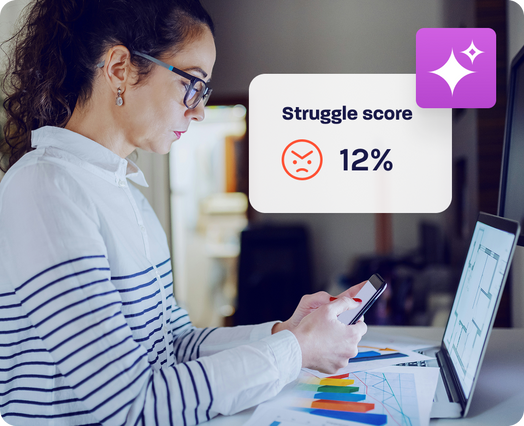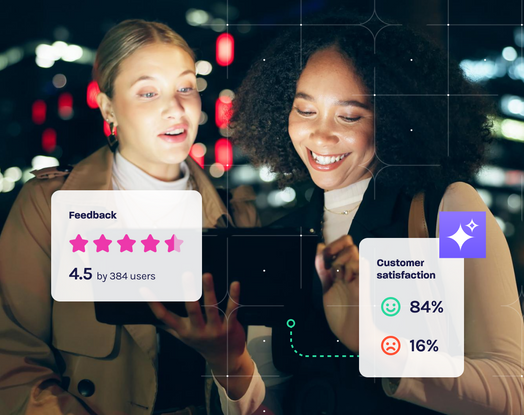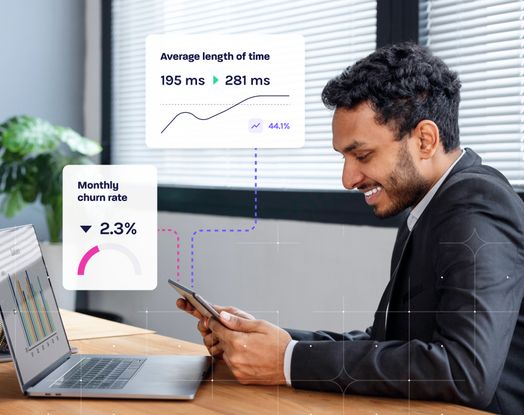
Mobile app analytics: Becoming best in class
Discover the key elements to consider when optimizing your mobile app analytics
It’s estimated that 90% of mobile internet time is spent in mobile apps. To put that in perspective, the average adult will spend 4 hours 11 minutes online with their mobile, of which 3 hours 47 minutes will be spent in apps. This gap between mobile web and mobile app usage has been growing over recent years, and there’s no sign of it slowing down.
There are nearly 4.4 million apps available in the Apple App Store and 30,000 new apps are added every month. The most popular mobile apps are used for social media and creating video content, but apps are used for a variety of reasons: for example, 27% of adults use a retail app on their smartphone or tablet.
As mobile app use continues to grow, it’s critical that businesses deliver frictionless experiences for their customers. The digital customer experience (DX) has never been more important. Even before the huge shift to digital platforms in 2020, almost a third (32%) of customers will stop doing business with a brand they loved after just one bad experience.
It’s therefore vital that businesses get the customer digital experience right—and mobile app analytics plays a huge part in that.
Is mobile app analytics necessary?
Organizations are now aware of the important role that analytics plays in helping to deliver their business outcomes. Gartner notes that data and analytics are a core business function today, rather than a secondary activity. The analyst describes them as “a shared business asset aligned to business results.”
Mobile app analytics is necessary because tracking every element within a mobile journey allows organizations to understand where to prioritize efforts, which improvements will have the greatest impact on customers and which journeys aren’t performing as they should.
However, it’s important to note that many mobile app analytics tools fall short on delivering the full spectrum of information that enterprises need to prioritize fixes or enhancements or identify opportunities to improve CX.
How important is mobile app analytics to companies?
Mobile apps are increasingly popular, yet 24% of users will delete an app after just one use due to an unsatisfactory experience. And chances are they’ll never think about reinstalling.
Glassbox’s own research confirms that shoppers will abandon purchases on digital channels if they experience slow loading times (29%) or technical glitches (20%.) Nearly half of customers (49%) believe app crashes negatively impact their view of the brand, with 25% saying they think less of the brand following a crash and 24% revealing they’re likely to move to a competitor.
Gaining real-time insight into these problems—alongside advice on how to optimize and elevate every journey—is invaluable. This is where mobile app analytics comes in.
There are two ways to analyze user journeys within your mobile app.
- Quantitative methods such as behavioral analysis and experimentation can help you understand what users are doing, why they’re doing it, what outcomes they are hoping to achieve and what’s preventing them from doing so.
- Qualitative research such as usability testing labs and surveys can help you build customer relationships and provide further context, but this approach often requires greater effort and expense.
Understanding the difference between web and mobile app analytics
Mobile apps are a different entity to web-based apps. There are a wider variety of factors that can impact their performance, including device types, operating systems and versions, app versions, battery and memory usage and network connections.
The average mobile app also leverages more than 17 separate Software Development Kits, or SDKs. These are a great way to cut down on development time and add features and functionality to your app. But they can also add bulk and impact performance, which is a major factor when users are deciding which apps to delete to free up space on their phones.
Additionally, each SDK requires monitoring and upkeep to ensure it remains compatible with your app as well as your larger SDK stack, which leads to “SDK fatigue.” It’s therefore vital that product owners deploy mobile analytics tools that offer maximum functionality and value. For example, rather than deploying three SDKs to cover quantitative, qualitative and crash analytics, it’s best to use a single SDK that does all three.
Crashes and installs: the metrics that matter
As we’ve already talked about, crashes are the biggest sticking point for users when it comes to CX.
Crash analytics allow you to investigate crash scenarios by identifying the type and quantity of crashes, what screen they occur on, and what actions happened directly before the crash. The ability
to view the crash rate per app version can also help in determining whether a new release is causing crashes, or whether an old version needs to be forcefully retired due to performance issues.
How to track user engagement
To gain a clear picture of user engagement you need to understand where users spend the most time in your app and what’s causing frustration.
Metrics such as total app sessions over time help you track macro-trends, while session replays and interaction maps can help you quantify what customers are doing and where they are focusing. This helps to determine areas for improvement within the app. Mobile app journey maps and conversion funnels help you understand why drop-offs and deviations happen, as well as alert you to troubling trends.
Your mobile app analytics reports should help you understand user engagement so you can increase the number and length of interactions with your app and create value for your users.
How to organize event tracking
To drive CX, mobile product owners must capture 100% of sessions and 100% of session events.
Mobile app analytics solutions should track user behaviors that indicate frustration like rage taps, dead taps, tilts and zooms. Product owners should also leverage tools that capture server-side elements like API calls, AJAX requests and bugs to help you understand if something is happening under the surface. As with other metrics, tracking these by app version will help you see if a change has had an impact on usability or conversion rates.








